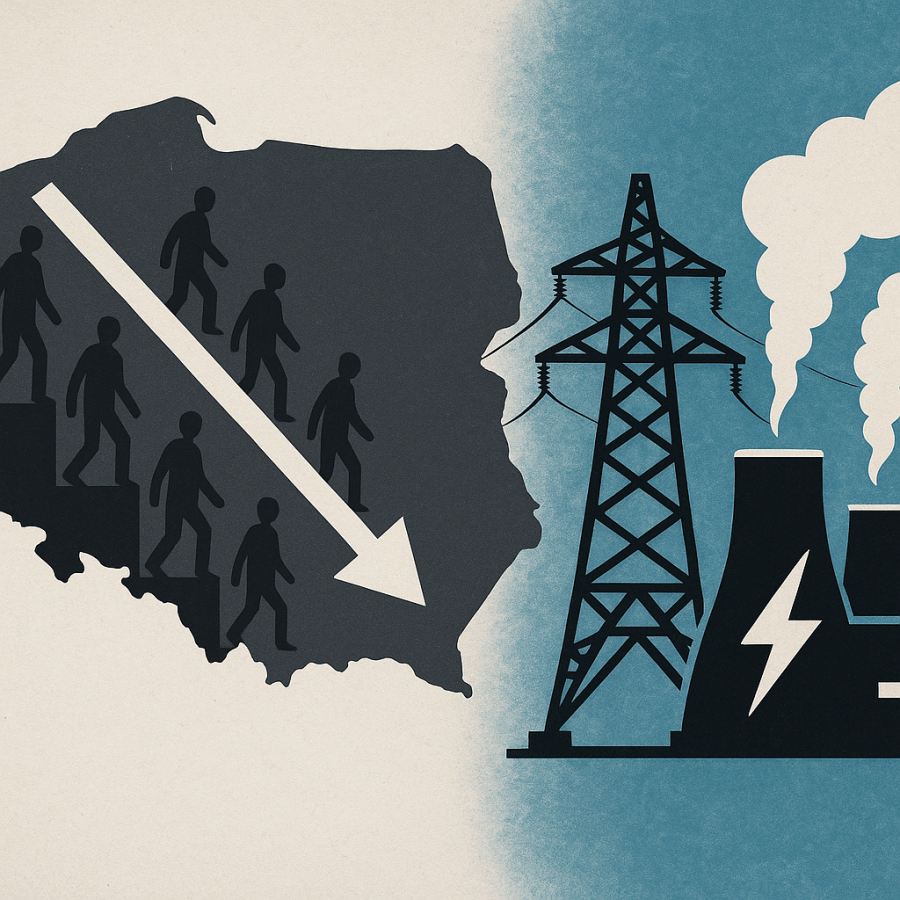The Central Statistical Office (GUS) has released the latest population data for Poland. At the end of July 2025, the country had 37.39 million inhabitants, down from 37.49 million at the end of 2024. This confirms a long-term depopulation trend.
Divergence between projections and reality
The assumptions of the Polish National Energy and Climate Plan (NECP) are based on a scenario assuming that by 2030, Poland’s population will reach 37.7 million. Yet today it is already clear that this scenario borders on the impossible - Poland has for several years recorded one of the steepest demographic declines in the EU. In July 2024, Eurostat reported that Poland ranked among the top member states in terms of population loss.
Nevertheless, energy forecasts - both for 2030 and 2040 - do not account for the shrinking population. On the contrary, long-term scenarios assume that by 2050, Poland will require more than 300 TWh of electricity, reflecting expectations of growing demand.
Is nuclear power truly necessary for Poland?
Experts emphasize that ignoring demographic trends raises serious questions about the scale of planned nuclear power investments.
- “There is an urgent need for a demographic stress test for the first planned nuclear power plant in Poland. Lower energy demand after 2040 would mean a higher share of renewables in the National Power System and a reduced need for electricity from the nuclear plant planned on the Baltic coast.” - commented Kuba Gogolewski, Programme Director at the Mission Possible Foundation.
Fewer people = lower energy demand. But by how much?
Depopulation entails not only reduced demand for housing, infrastructure, and public services, but also less energy use. Forecasts that assume steady growth in electricity consumption - while disregarding the declining working-age population and the overall population drop - risk significantly overstating future demand, particularly beyond 2040, when Poland’s population is likely to fall below 35 million.
The Development Strategy of Poland until 2035 document, currently in public consultation, correctly diagnoses the coming decline in the working-age population and workforce over the next decade. Yet these findings have not been reflected in the energy sector and its planning assumptions.
Lower demand, in turn, implies a larger share of renewables in the national energy mix and a faster-than-expected decline in fossil fuel consumption across all sectors of the economy.
Time to adjust the Polish energy strategy
The growing gap between actual demographic trends and energy projections highlights the need to revise strategic documents. Without a “stress test” grounded in population data, there is a risk of overestimating investment needs and creating inconsistencies between societal realities and the energy infrastructure being developed. Especially that the latest data from the Polish Transmission System Operator - PSE for August indicate that from January to end of August electricity use from the Polish National Grid has been 2,52% lower than in the same period of 2024. Each month, the measurements prove that there is something wrong with the official modelling, calling for adapting it to reality.
